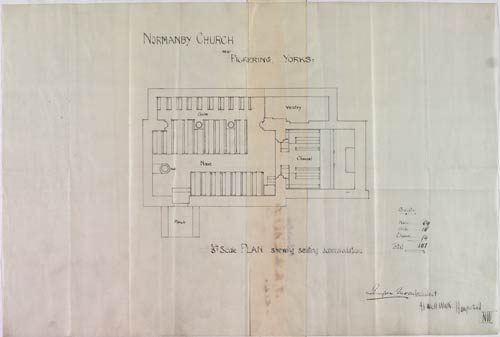An attractive little church with a familiar story: built in the Middle Ages, Georgianised in the 18th-century and re-medievalised in Victorian times.
St Andrew's had been renovated about a century before Temple Moore began work on it — the date 1778 is on a beam inside. Elements of the original medieval church had survived: the mid-12th-century north arcade of three bays, a little of the Norman arch in the south doorway. Moore was asked to rebuild the chancel and arch and the north aisle. He also reset a 15th-century window in the north wall, and put in a new east window with three lights — a typical Moore feature.
The total cost for the work was £1270. For the stained glass in the new east window Moore turned to the artist he nearly always used, Henry Victor Milner (1866–1944). Their professional relationship lasted until Moore's death, and Milner went on to work for Moore's son-in-law, Leslie Moore, when he took over the practice.
Another 19th-century addition to St Andrew's was an American organ, installed at a cost of £18-18s.
Normanby's name contains a clue to its early history. It means “the settlement of the Norwegians”. It has a counterpart across the moors in Danby, which means “the settlement of the Danes”. Place names with -by on the end were originally Viking settlements. There are over 200 of them in Yorkshire.
